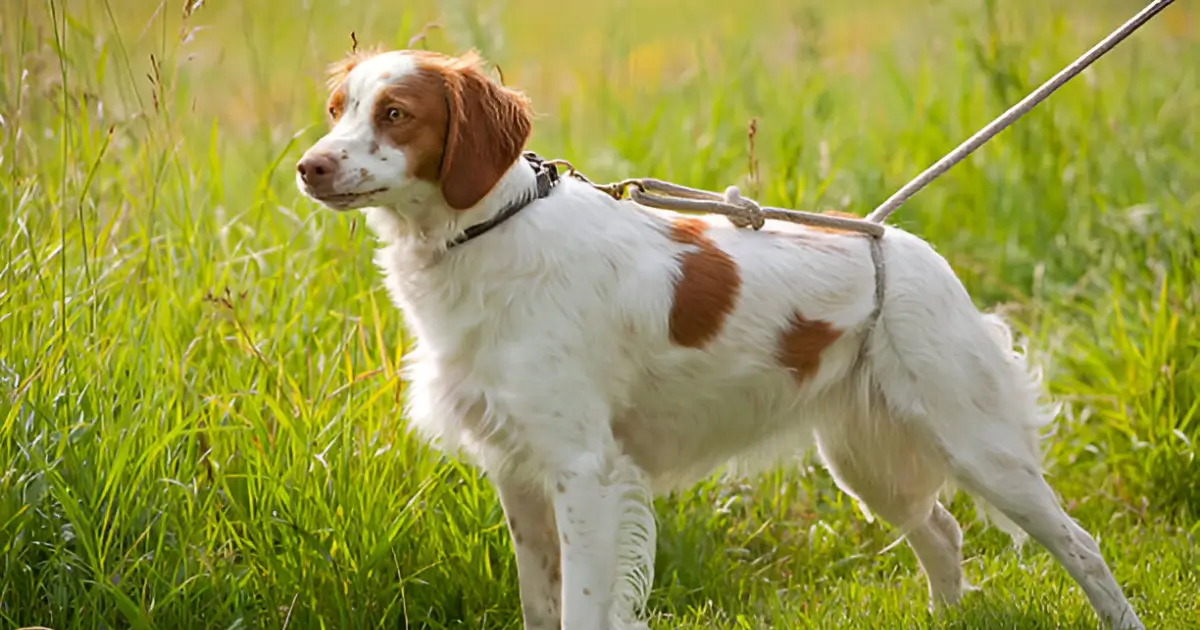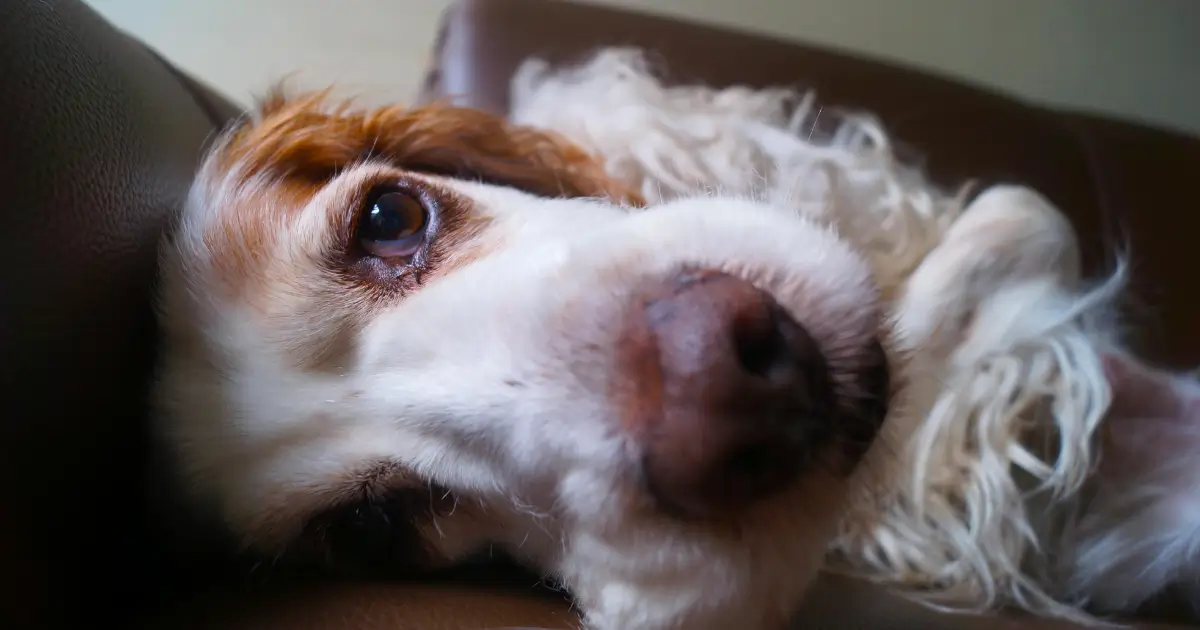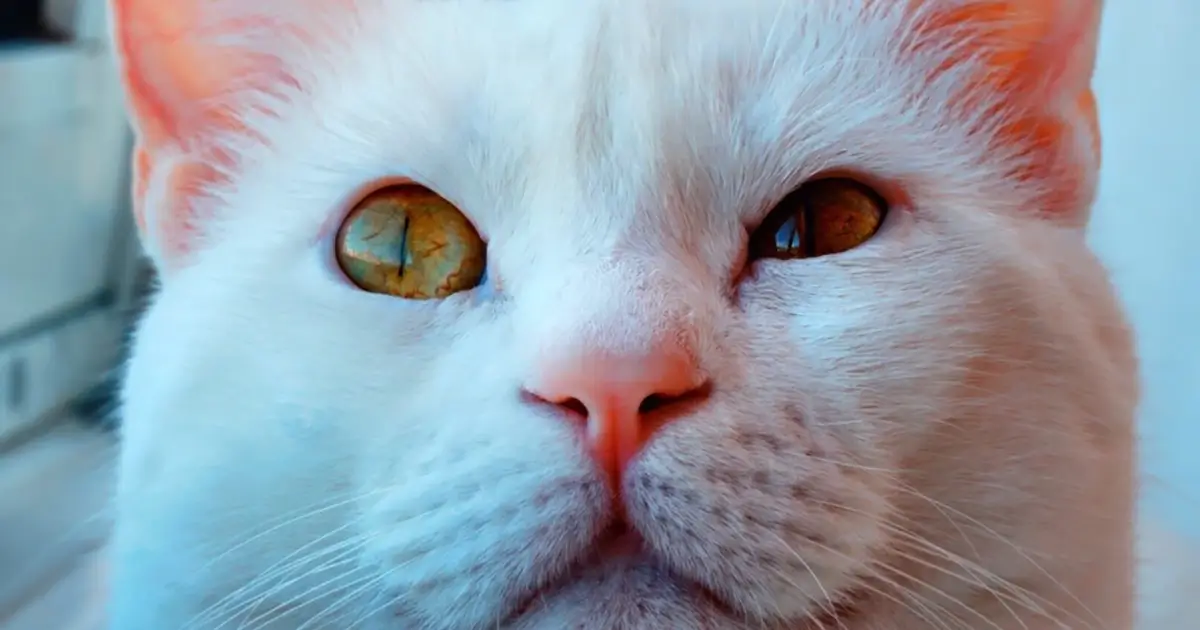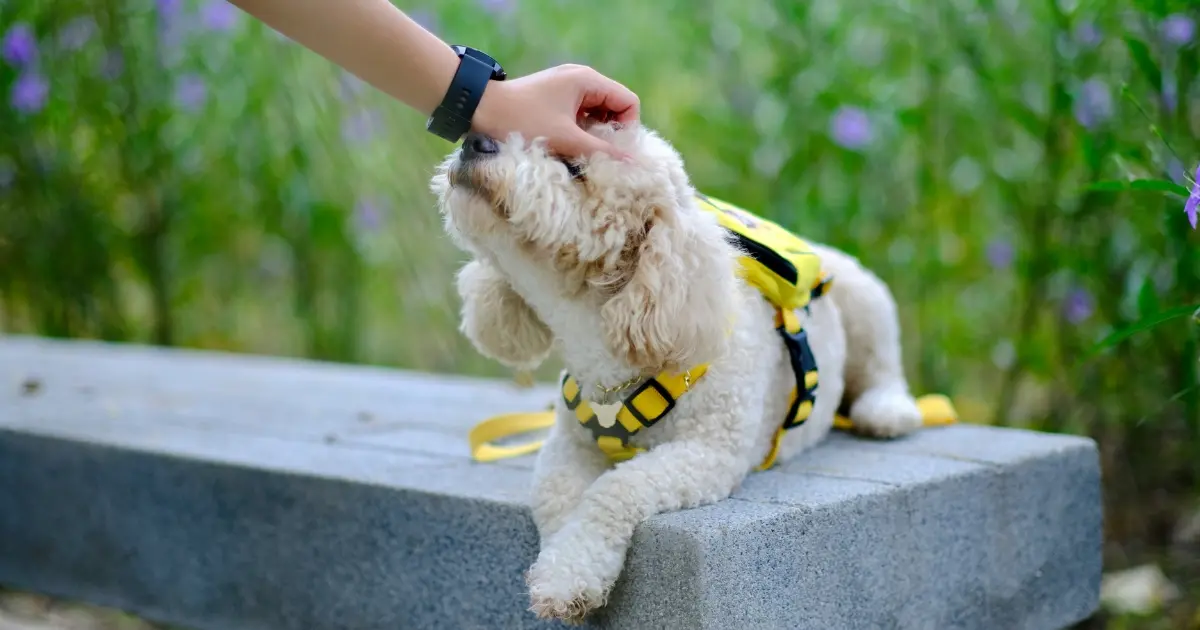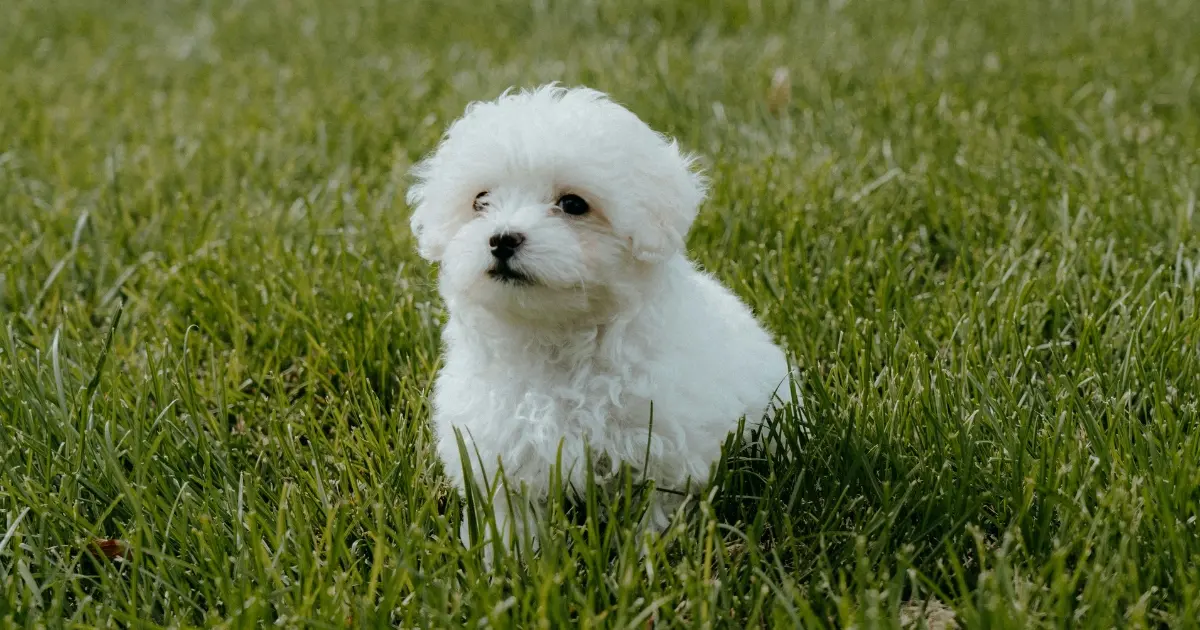Dog lovers often dream about certain breeds. But the brown weiner dog and black wiener dog come with big challenges. Dachshunds, with their long bodies and short legs, might look cute at first.
But, why dachshunds are considered the worst breed is clear when you look at their personality and health. These small dogs have a big attitude that can be tough for even experienced owners. Their genetics and temperament lead to many behavioral and health problems.
Looking at dachshund ownership fully means seeing beyond their cute looks. They face training issues and serious health risks. These dogs need special care and commitment that many families might find too much.
While some breeds fit into different homes easily, dachshunds need a special approach. Their unique body and strong will make them a breed that needs a lot of research and preparation before bringing one home.
Table of Contents
Understanding the Dachshund’s Challenging Temperament
Dachshunds are often seen as one of the most challenging dog breeds. These small but fierce wiener dogs can be tough for pet owners. Their difficult behaviors can even test the patience of seasoned dog trainers.
The brown weenie dog’s complex personality comes from its hunting roots. Originally bred to hunt badgers, these dogs have a strong and independent spirit. This makes training them very hard.
Stubborn Nature and Training Difficulties
Dachshunds are known for being very stubborn. Their independent nature makes training them a big challenge for owners:
- Extremely resistant to standard training methods
- Short attention spans
- Strong-willed personality
- Tendency to ignore commands
Aggressive Tendencies Towards Strangers
These small dogs can be surprisingly aggressive. Their protective instincts may cause them to bark loudly or even bite when they meet new people or animals.
“Dachshunds may be small, but their attitude is anything but!” – Canine Behavior Expert
Excessive Barking Problems
Dachshunds also have a big problem with barking. Their loud, constant barking can be a real problem. It’s especially challenging in apartments or close living spaces.
- Frequent and loud barking
- Difficult to control vocal outbursts
- Potential noise complaints from neighbors
Understanding these temperament challenges is crucial for potential dachshund owners seeking a compatible pet companion.
Health Issues That Plague Dachshunds
Dachshunds, whether mini or standard, face many health challenges. These include the golden long haired dachshund and the short-haired variety. They are prone to several medical conditions that can affect their quality of life.
The most critical health concern for dachshunds is intervertebral disc disease (IVDD). This condition is common in their unique body type. Their elongated spine makes them very vulnerable to back problems. Up to 25% of dachshunds will face serious spinal issues in their lifetime.
- Spinal Vulnerabilities: High risk of back injuries and disc herniation
- Genetic Predispositions: Inherited health risks across dachshund hair kinds
- Obesity Complications: Increased strain on already fragile skeletal structure
Different dachshund varieties, including the mini and standard sizes, share similar health risks. Eye problems, dental issues, and genetic conditions can affect these dogs. This creates long-term medical challenges for owners.
“Prevention is always better than cure when it comes to dachshund health management.” – Veterinary Specialists
Weight management is key in preventing health risks. Excess weight can worsen existing conditions. This is especially true for golden long haired dachshunds and other varieties with limited mobility.
- Regular veterinary check-ups
- Controlled diet
- Appropriate exercise
- Weight monitoring
Understanding these health challenges is crucial for any potential dachshund owner. It helps them make informed decisions about their future companion’s care and potential medical needs.
Why Dachshunds Are The Worst Breed: A Detailed Analysis
Dachshunds may look cute, but they come with big challenges. Are dachshunds smart? Yes, they are, but they can use their smarts in frustrating ways.
Common Behavioral Problems
Dachshunds are known for their tough temperaments. These small dogs can have big behavioral issues. This makes them hard to live with:
- Extreme stubbornness during training
- Frequent territorial barking
- Potential aggression towards strangers
- Separation anxiety when left alone
High Maintenance Requirements
The long-haired dachshund needs a lot of grooming. Do weenie dogs shed? Yes, they do! Their fur needs regular brushing and professional grooming to keep it looking good.
“Owning a dachshund is not for the faint of heart or light of wallet.” – Veterinary Professionals Association
Financial Burden of Care
Having a dachshund costs a lot:
- Frequent vet visits
- Special back health care
- Professional training
- Expensive food
Future owners need to be ready for the ongoing costs and care needed for these dogs.
The Hidden Costs of Dachshund Ownership
Getting a puppy dachshund might seem like a dream. But, the financial side can be a big surprise. These cute long haired miniature dachshund puppies come with hidden costs that owners need to think about.
The cost of owning mini dotson puppies is more than just the initial price. Owners soon find out these dogs need special care. This can really affect their budget.
- Veterinary Expenses: Dachshunds are prone to specific health issues
- Specialized Medical Care: Back problems require frequent check-ups
- Orthopedic Equipment: Custom beds and ramps can be costly
- Grooming Needs: Different coat types demand professional maintenance
Potential dachshund owners should budget for unexpected medical treatments, which can reach thousands of dollars annually.
“A dachshund is not just a pet, it’s a long-term financial commitment that requires careful planning.” – Veterinary Experts
Training these stubborn dogs often needs a pro. Group classes or private trainers for dachshund behavior can be expensive. This adds a lot to your monthly budget.
- Basic obedience training: $100-$300
- Specialized behavioral classes: $200-$500
- Ongoing training support: $50-$150 per month
Knowing these hidden costs helps future owners make smart choices. They can decide if a dachshund is right for their family.
Dachshund’s Incompatibility with Children and Other Pets
Dachshunds can be tricky for families with young kids and other pets. Their unique body shape makes them easy to hurt. They need gentle care to stay safe.
Thinking about getting a dachshund? Know they can be complex pets. They need special care, especially for seniors or families.
Risk Factors with Young Kids
- Fragile spinal structure increases injury risk during playful interactions
- Low-to-ground body makes them susceptible to accidental dropping
- Potential for defensive biting when feeling threatened
“Dachshunds demand respectful and gentle handling, especially around children.” – Veterinary Behavioral Specialist
Problems with Multi-Pet Households
Dachshunds can be tough in homes with other animals. Their hunting instincts and territorial nature can lead to fights.
- Strong hunting background triggers chasing behaviors
- Limited tolerance for other animals’ presence
- Potential aggressive responses to perceived threats
Knowing these traits helps families decide if a dachshund is right for them.
Common Grooming Challenges for Different Dachshund Coats
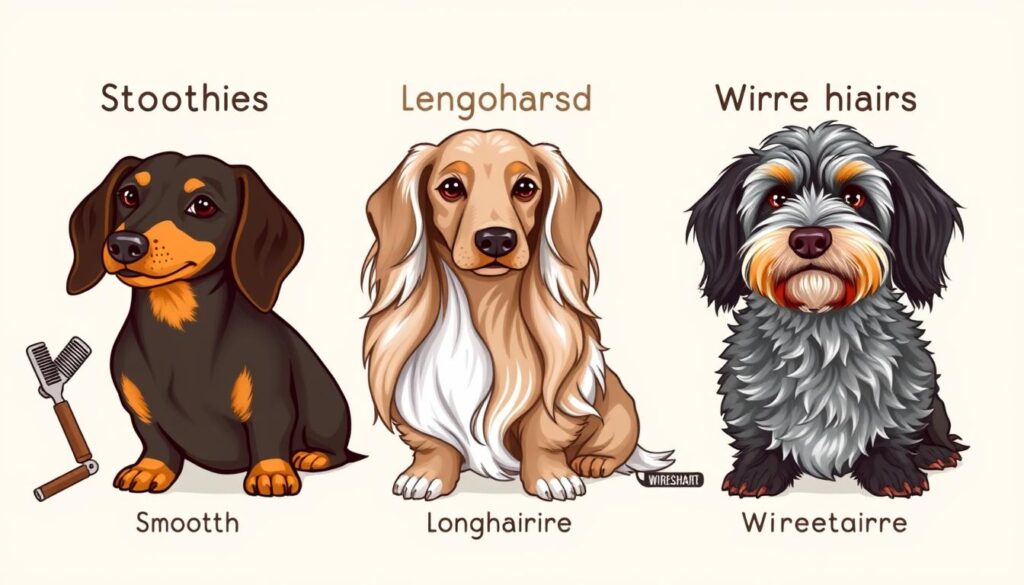
Dachshunds have three coat types, each with its own grooming needs. Knowing these differences is key for anyone thinking about getting a dachshund. It helps decide if they’re good with kids and fit into your home.
- Smooth-Coated Dachshunds
The short-haired brown dachshund dog needs little grooming. Their coat should be brushed weekly to keep it clean and healthy. They shed a bit and are easier to care for than the others.
- Long-Haired Dachshunds
Dachshunds with long, silky coats need more grooming. Their hair must be brushed daily to avoid tangles. They also need regular trims to keep their fur looking good.
- Wire-Haired Dachshunds
These dachshunds have a dense, wiry coat. It needs to be hand-stripped by a pro several times a year. This keeps their coat right and prevents skin problems.
“Each dachshund coat type tells a unique grooming story, demanding tailored care and attention.” – Canine Grooming Experts
Thinking about these grooming needs is important. The coat type affects how much time you’ll spend on grooming. It also impacts how well a dachshund fits into a family and home.
Pro Tip: Regular grooming sessions help strengthen the bond between dachshunds and their human companions.
Back Problems and Mobility Issues in Dachshunds
Dachshunds are loved for their unique body shape. Sadly, this shape makes them prone to serious back issues. Their long spine puts them at risk for intervertebral disc disease (IVDD). This can greatly affect their life quality and the cost of owning a mini dachshund.
Before getting a dachshund, it’s key to know about the health risks. These small dogs are genetically more likely to have spinal problems. This means they need careful care and possibly expensive treatments.
IVDD Risk and Prevention
To prevent back problems in dachshunds, several steps are important:
- Keep them at a healthy weight to ease spine stress
- Use supportive harnesses for walks
- Avoid sudden jumps or climbs
- Provide orthopedic bedding
Lifestyle Modifications Required
Owners must take special steps to protect their dachshund’s spine. Careful handling, limited stair access, and controlled exercise are key. These actions are crucial for responsible pet care.
“Prevention is always better than cure when it comes to dachshund spinal health.” – Veterinary Spine Specialists
Regular vet visits and early action can lower the risk of serious mobility issues. This helps manage the costs of this breed’s health challenges.
Exercise Limitations and Space Requirements
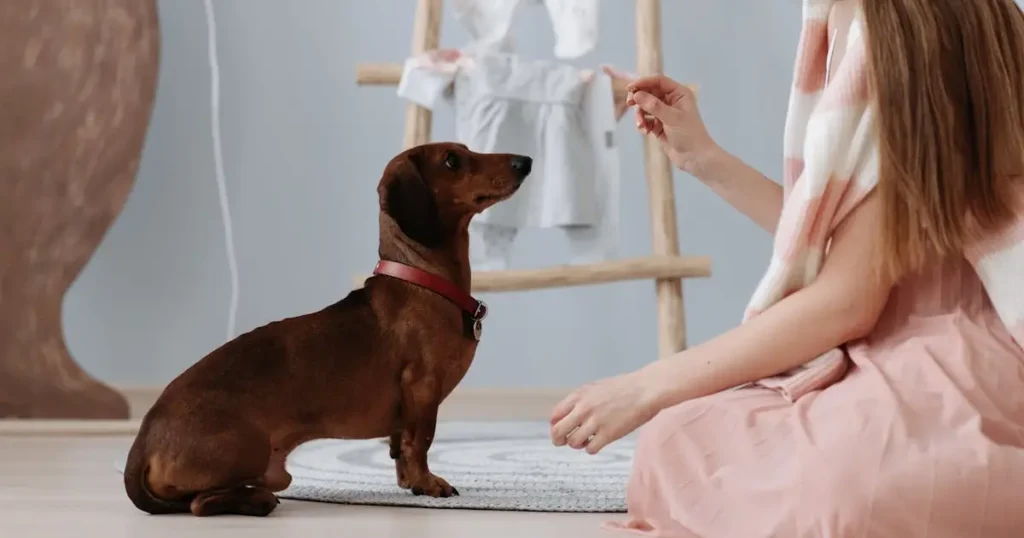
Dachshunds face big challenges when it comes to exercise. Their unique body shape limits how much they can move. This is true for both the brown weiner dog and the black wiener dog.
These dogs need special care when it comes to physical activity. Their long spine and short legs make them prone to injury. This is especially true during high-energy activities.
- Limited jumping ability
- Short walking distances
- Risk of back strain during play
- Need for controlled movement
“These dogs need structured, gentle exercise to prevent potential health complications,” warns veterinary specialist Dr. Rachel Thompson.
Dachshunds need a specific amount of space. Small living spaces can actually work well for these compact canines. But, owners must make sure they get enough, but not too much, exercise. Apartment dwellers might find these dogs suitable, yet they still need regular, low-impact exercise.
- 30-minute daily walks
- Gentle play sessions
- Indoor mental stimulation games
- Careful weight management
Potential owners should know that dachshunds need careful attention to their exercise. Their needs are specific and must be met to avoid health problems.
Comparing Mini and Standard Dachshunds: Similar Problems
Dog lovers often ask, “What is the stupidest breed of dog?” Dachshunds are often at the top of that list. Whether you’re eyeing a wiener dog brown or a standard one, both mini and standard dachshunds face big challenges. These are things that any future owner should know.
Many think mini dachshunds are easier to handle. But this is not true. Both sizes of brown weenie dogs have their own health and behavior issues. These need serious thought before deciding to bring one home.
Size-Specific Health Concerns
Dachshunds, big or small, deal with the same health problems:
- Intervertebral disc disease (IVDD)
- Spinal issues
- Genetic joint problems
- Higher chance of getting fat
Behavioral Differences Between Varieties
Miniature and standard dachshunds might act a bit differently. But their main personality issues are the same:
- They can be very high-strung
- They don’t like to train
- They can be very protective of their territory
- They might be aggressive to strangers
“No matter the size, dachshunds are challenging companions that require dedicated and patient owners.” – Veterinary Behavioral Specialist
Potential dachshund owners must recognize that size does not determine ease of care or compatibility.

Lifespan and Long-term Care Challenges
Dachshunds live between 12 to 16 years, which brings special care needs for owners. Both dachshund and mini dachshund varieties face aging issues that need focused care and health services.
Their unique body shape affects them as they get older. Different dachshund hair types can change grooming needs. Golden long haired dachshunds might need more coat care.
- Increased veterinary monitoring
- Specialized senior dog nutrition
- Mobility support and adaptations
- Regular health screenings
Senior dachshunds often face serious health issues. Back problems get worse, needing careful handling and lifestyle changes. Owners must be ready for medical costs and emotional support during their pet’s later years.
“Aging dachshunds need compassionate, proactive care to ensure quality of life.” – Veterinary Gerontology Association
Knowing about these long-term challenges helps owners decide if a dachshund is right for them. It’s important to invest time, money, and emotional support for these dogs throughout their lives.
Conclusion
Before getting a dog, it’s important to think if a dachshund fits your life. Are dachshunds smart? They are, but they can be tough for some families. Their special body, health issues, and strong personality need a lot of care and understanding.
Getting a dachshund is more than just how cute they are. Do weenie dogs shed? Yes, especially the long-haired ones. They need a lot of care, from training to handling health problems. Their behavior can be hard for new dog owners to handle.
It’s key to know about a breed before getting one. Dachshunds, even the long-haired ones, are a big responsibility. They cost a lot and need a lot of care. Make sure you can handle their needs before bringing one home.
Being a good pet owner means knowing everything about a breed. Dachshunds are not bad dogs, but they need special care. They need owners who are patient, knowledgable, and can handle their unique needs.
FAQ
Are dachshunds really difficult to train?
Yes, dachshunds are very stubborn and hard to train. They are independent and strong-willed. This makes them one of the toughest breeds to train.
They need a lot of patience, consistent training, and special techniques. This helps them follow commands better.
Do dachshunds have serious health problems?
Dachshunds face serious health issues, especially Intervertebral Disc Disease (IVDD). Their body shape puts a lot of strain on their backs. This makes them very prone to spinal problems.
They also often get obese, have eye disorders, and genetic health issues. These can lead to expensive medical bills.
How challenging are dachshunds with children and other pets?
Dachshunds can be tough in families. Their backs are fragile and can easily get hurt from kids’ rough play. They can also be aggressive towards strangers and other pets.
They have a strong prey drive. This can cause problems in homes with other pets or young children.
What are the grooming requirements for dachshunds?
Dachshunds need different grooming based on their coat type. Long-haired ones need regular brushing to avoid matting. Wire-haired and smooth-coated dachshunds have their own grooming needs.
They shed a lot, so grooming is key to keep their coat in good shape and prevent skin problems.
Are dachshunds expensive to own?
Dachshunds can be quite costly. The initial cost is between 0 to ,000. But there are ongoing expenses too.
These include vet care for their backs, surgery for IVDD, grooming, training, and possibly home changes for their needs.
Do dachshunds have exercise limitations?
Yes, dachshunds have to be careful with exercise. Their long backs and short legs make them prone to injury. They need gentle exercise routines.
This can be hard for owners who like active dogs or expect a high-energy pet.
Are mini dachshunds any better than standard dachshunds?
Mini dachshunds are not really better than standard ones. Both have similar health risks, behavioral challenges, and training difficulties. Mini dachshunds might even be more challenging to manage.
How long do dachshunds typically live?
Dachshunds live between 12-16 years. But, as they get older, their health problems like back issues and obesity get worse. This means they need more care and expensive medical treatments.
